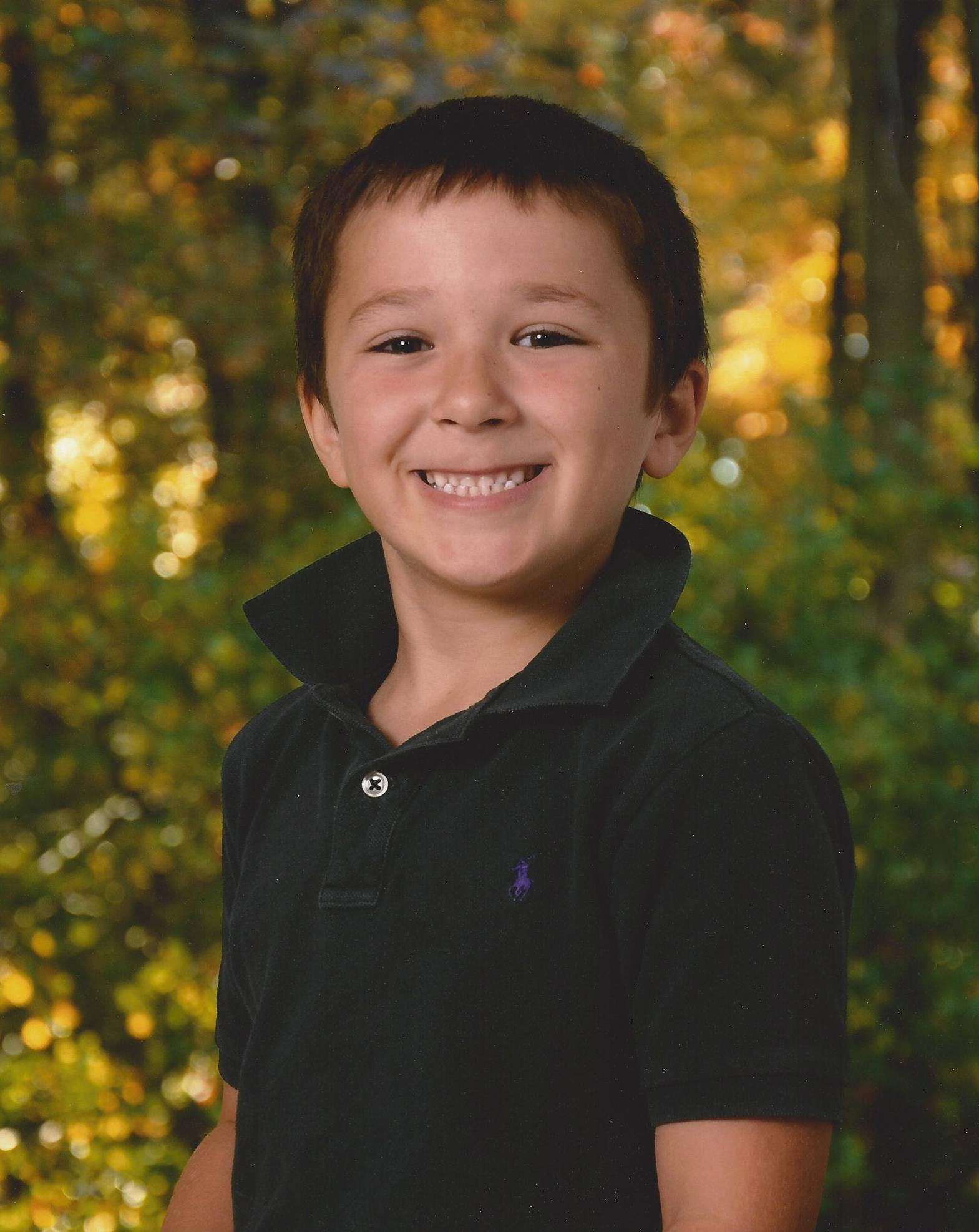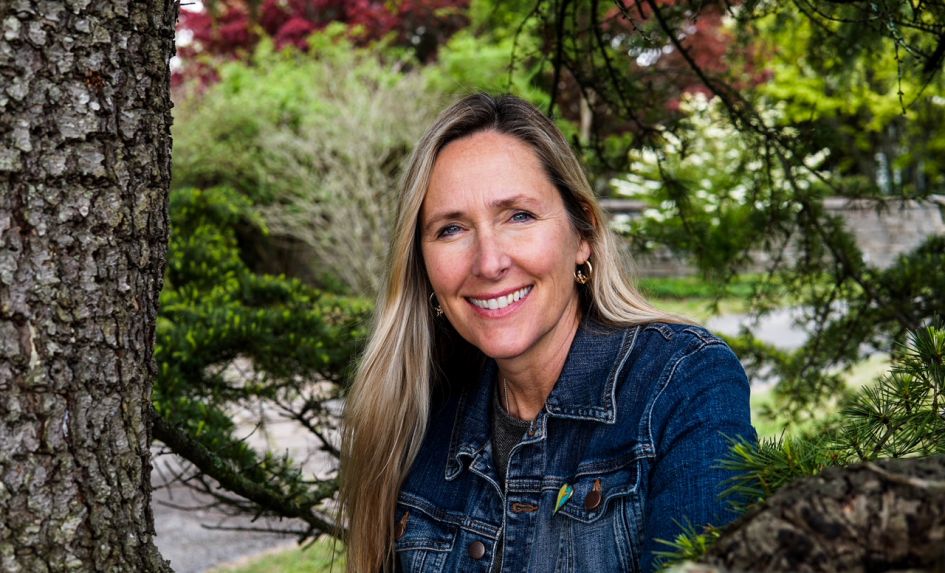On the morning of 14th December 2012, something happened that was to change the lives of Scarlett Lewis, her family and her local community forever.
In a calm, level tone she explains that “My six-year-old son was murdered in his first grade classroom at Sandy Hook Elementary School, alongside 19 of his classmates and six educators in one of the worst mass murders in US history.” Perpetrated by Adam Lanza – a 20-year-old local resident and former pupil at the school, who took his own life at the scene – the shooting prompted nationwide mourning and a period of soul-searching over the country’s gun laws and provision of mental health support.
 Recalling her feelings in the immediate aftermath, Lewis remembers how “On the day of the shooting I was waiting outside the school with my other son, JT, to see whether Jesse (left) was going to be coming back dead or alive. JT was 12 at the time, attending the nearby middle school. As I was being questioned by the police I came to realise that JT was watching my every move; that he was learning how to deal with this tragedy in our lives by watching me.
Recalling her feelings in the immediate aftermath, Lewis remembers how “On the day of the shooting I was waiting outside the school with my other son, JT, to see whether Jesse (left) was going to be coming back dead or alive. JT was 12 at the time, attending the nearby middle school. As I was being questioned by the police I came to realise that JT was watching my every move; that he was learning how to deal with this tragedy in our lives by watching me.
“I quickly recognised that his reaction was going to depend not on how I told him to handle it, but on how he’d see me handle it. That made me mindful about my reaction – which isn’t to say that I showed no emotion. I miss Jesse every day, but as a lesson to JT, I wanted to show others a model of how it’s possible to go through such tragedy.”
Rage and forgiveness
Lewis’ response to the events of that day subsequently took on a form that some might find difficult, if not impossible to contemplate.
“There were actually 28 victims in the Sandy Hook tragedy,” she says, “because I include Adam Lanza, and his mother. She was a single mom doing the best that she could, without any help. She had a son who was diagnosed with Asperger’s – that had nothing to do with what happened, but he had social issues, he’d been bullied.
“The tragedy began with an angry thought in his head, which grow into rage. He had been neglected, he was in pain. I actually feel compassion for him, and have forgiven him – almost from the very beginning.”
Feeling intuitively that what transpired could have prevented, Lewis set about researching those factors and issues that might have contributed to Lanza’s actions and soon found herself exploring the background to a range of mental health affecting not just schools in the US, but others in countries throughout the world.
In the course of her research, Lewis came across the work of Dr. Chris Kukk, a professor of political and social Science at Western Connecticut State University, who introduced her to social and emotional learning (SEL) – a form of intervention that seeks to impart a series of essential life skills around maintaining relationships, developing deep and meaningful connections with peers, managing emotions and building resilience.
Thoughtful responses
“Kids who are able to access it have higher grades and test scores, better attendance, less stress and anxiety and exhibit fewer behavioural issues,” says Lewis. “It’s statistically shown to be an effective way of reducing bullying.
Research shows that children who have received it from kindergarten through to becoming young adults are better off physically, mentally and emotionally.
When I saw all this, that SEL’s been around for decades and that we know so much about its benefits, I thought, how come every child doesn’t have access to this?”
As Lewis discovered, the answer to that question lay partly in the cost of existing SEL programmes and their requirements for extensive teacher training. Lewis thus began working with a group of educators, childhood development specialists, child psychologists and counsellors to create an accessible programme that could help schools overcome the barriers to getting SEL into classrooms.
The resulting Choose Love Enrichment Programme seeks to go beyond the five core components of SEL [see below] to encompass elements of emotional intelligence and mindfulness, while taking on board recent developments in neuroscientific research. As Lewis puts it, “We want kids to understand what’s happening to them when they lose their temper, and that they can control their response. The aim is to give them the skills and tools they need to respond thoughtfully in any given situation, circumstance or interaction.”
The Programme currently includes a branch aimed at practitioners working with toddlers and infants that focuses on attachment, plus 20- to 30-minute activities for younger children that involve structured conversations aimed at developing peer-to-peer communication skills. With time more limited at middle and high school level, the Programme’s provision for older children and young people typically consists of 10- to 20-minute lessons on a daily or weekly basis.
Lewis’ plan now is to take the Choose Love Enrichment Programme further afield to the UK and elsewhere, with January having seen Lewis address the Bett Show and attend meetings in Parliament. The interest seems to be there, with the Programme’s freely available online resources having been downloaded in over 60 countries.
Spreading the message
It remains to be seen whether the Choose Love Enrichment Programme finds a foothold in the UK, given how schools here are just as time-pressed as their American counterparts – but in the meantime, I’m interested in what sort of feedback Lewis has received. How have people taken to the message of empathy at the centre of the Programme and Lewis’ broader Choose Love Movement? Lewis politely corrects me. “The goal isn’t to spread empathy, it’s to spread compassion. Compassion contains both empathy, the identifying of an issue, but also a call to action for everyone to take responsibility for what’s going on in our world.
“Overall, the response has been overwhelmingly positive. The Choose Love Movement is a place where everyone can come together. Regardless of what your politics are, or your view on guns, it doesn’t matter – you can come together in the Choose Love movement and be part of the solution.”
The factionalism she hints at prompts me to ask what seems like an obvious question. Given the polarised tenor of the times, and the apparent determination of some to sow as much division as possible, has it been difficult for her message to cut through and reach people? Has she encountered any active hostility? “Nobody’s ever come up to me and said ‘Choosing Love? That’s a pretty stupid idea,’” she replies. “How we respond to difficulties is up to us. When we respond with kindness, caring, concern and compassion, we’re taking our personal power back and making the world a better place. When we react with anger, hatred and resentment, we’re giving that personal power away, in effect becoming victims ourselves.”
Doing what’s right
Giving individuals the tools to develop and internalise this process of active decision-making in the face of difficult emotional challenges is a core part of Choose Love movement, though as Lewis herself concedes, the pathway there isn’t necessarily a smooth one. “Even now, it’s not like I don’t sometimes fall into anger and resentment – but it doesn’t feel good. Love does. I don’t feel good when I fall into anger, which is what makes me choose love.”
For all that Lewis might not have personally encountered any pushback to the ideas she’s putting forward, she does acknowledge that, “There’s a whole industry dedicated to treating the symptoms of anxiety and social issues, and people out there who won’t be happy with me for talking about proactively reducing and preventing the suffering before it even starts.
“I see it as my job to cultivate the courage it takes to step outside of all that and to do what’s right. I use Jesse as an example of courage. He stood up to the shooter, at six years old, and saved nine of his classmates’ lives before losing his own. We all have Jesse’s courage. He was a 6-year old boy, but courage is like a muscle – it has to be practised.”
The five core components of SEL
- Self awareness
- Awareness of others
- Responsible decision making
- Conflict resolution
- Emotional management
For more information, visit jesselewischooselove.org or follow @ScarlettMLewis.










